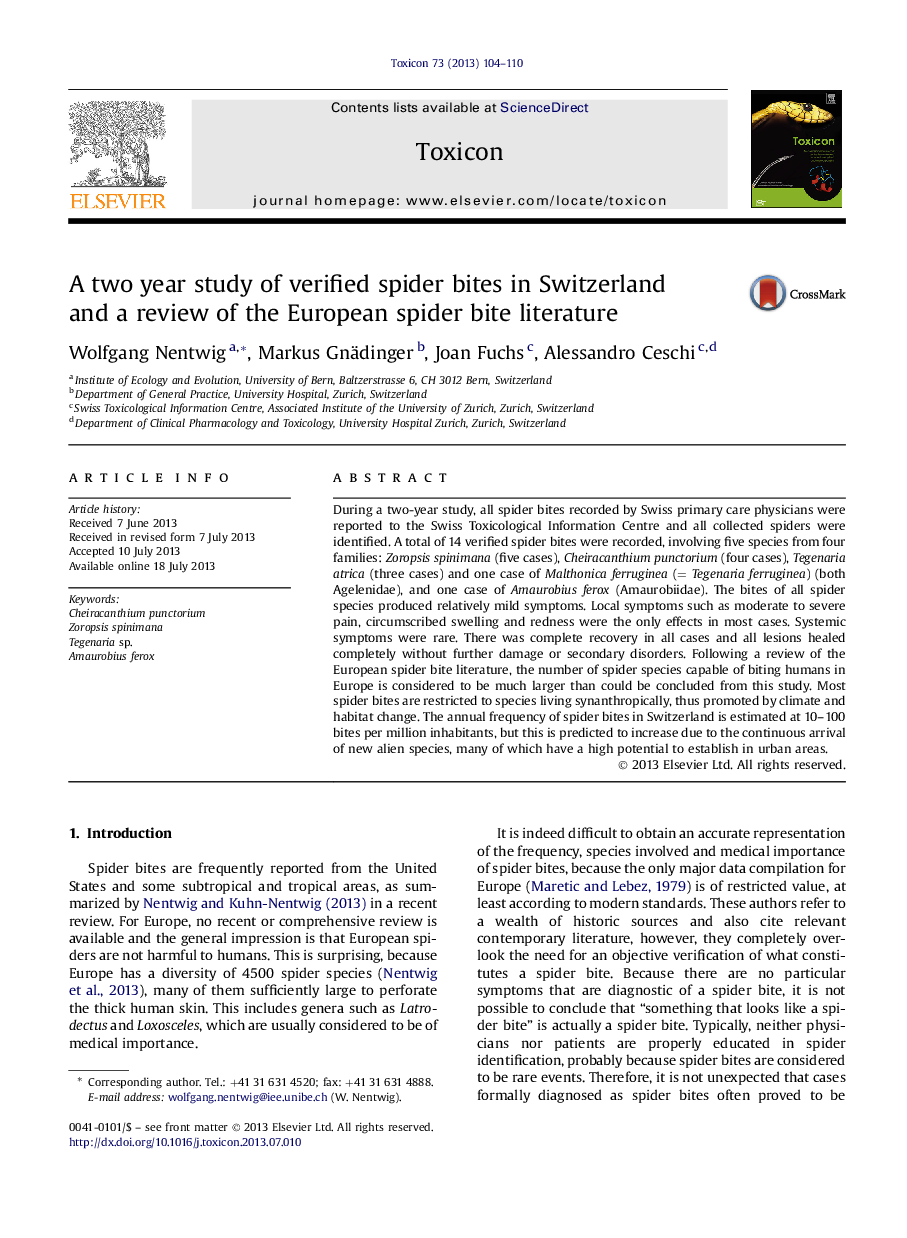| Article ID | Journal | Published Year | Pages | File Type |
|---|---|---|---|---|
| 8397355 | Toxicon | 2013 | 7 Pages |
Abstract
During a two-year study, all spider bites recorded by Swiss primary care physicians were reported to the Swiss Toxicological Information Centre and all collected spiders were identified. A total of 14 verified spider bites were recorded, involving five species from four families: Zoropsis spinimana (five cases), Cheiracanthium punctorium (four cases), Tegenaria atrica (three cases) and one case of Malthonica ferruginea (= Tegenaria ferruginea) (both Agelenidae), and one case of Amaurobius ferox (Amaurobiidae). The bites of all spider species produced relatively mild symptoms. Local symptoms such as moderate to severe pain, circumscribed swelling and redness were the only effects in most cases. Systemic symptoms were rare. There was complete recovery in all cases and all lesions healed completely without further damage or secondary disorders. Following a review of the European spider bite literature, the number of spider species capable of biting humans in Europe is considered to be much larger than could be concluded from this study. Most spider bites are restricted to species living synanthropically, thus promoted by climate and habitat change. The annual frequency of spider bites in Switzerland is estimated at 10-100 bites per million inhabitants, but this is predicted to increase due to the continuous arrival of new alien species, many of which have a high potential to establish in urban areas.
Related Topics
Life Sciences
Biochemistry, Genetics and Molecular Biology
Biochemistry, Genetics and Molecular Biology (General)
Authors
Wolfgang Nentwig, Markus Gnädinger, Joan Fuchs, Alessandro Ceschi,
